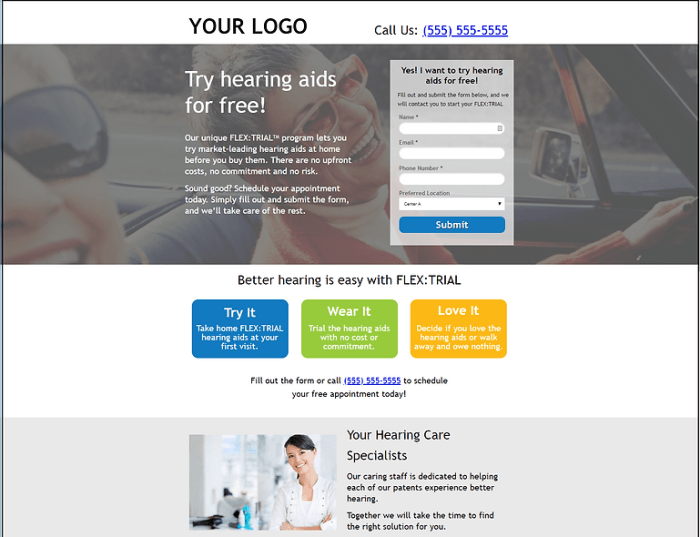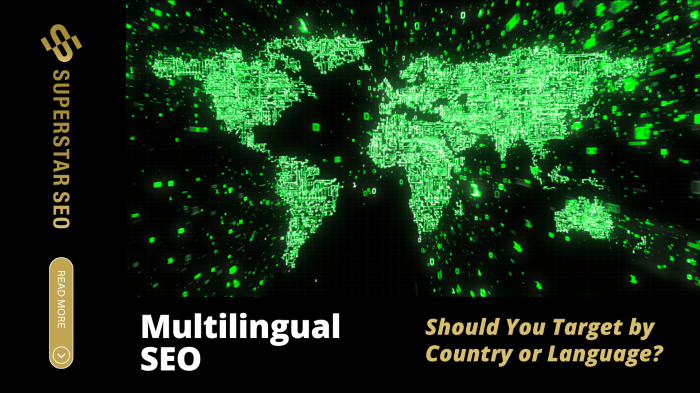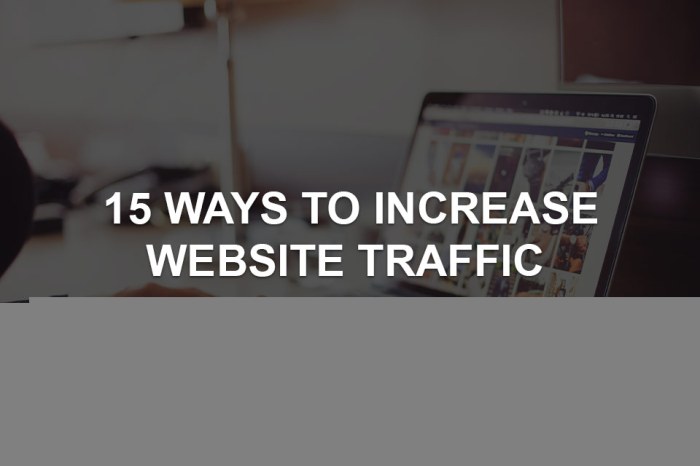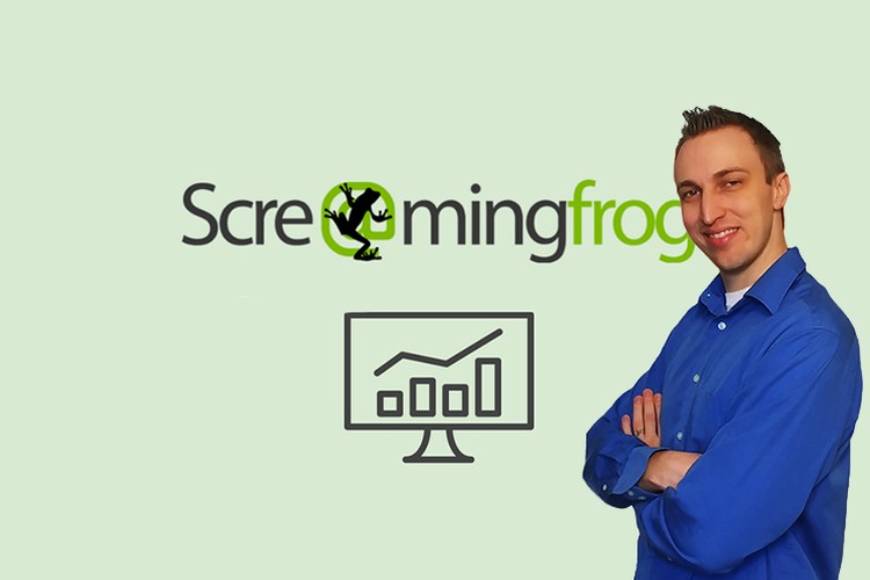Getting my website to the top of Google is a crucial goal for any online business. This comprehensive guide delves into proven strategies to achieve top rankings in search engine results. We’ll explore everything from optimizing your website’s technical aspects to crafting engaging content and building valuable backlinks.
This guide provides a structured approach to optimizing your website for search engines. We’ll analyze critical elements like website performance, content strategy, technical, and building authority through backlinks. Detailed strategies and actionable steps will be presented to help you understand and implement these key techniques.
Website Optimization Strategies
Optimizing a website for search engines and user experience is crucial for achieving high rankings and driving organic traffic. A well-optimized website not only improves visibility but also enhances user engagement, leading to increased conversions and business growth. This involves a multifaceted approach encompassing technical aspects, content strategy, and user experience considerations.
A comprehensive strategy addresses various elements, from website structure and speed to content quality and mobile responsiveness. Understanding the key factors that Google considers when ranking websites is paramount to developing an effective optimization plan. A good website will be a pleasant and informative experience for the user, reflecting well on the business it represents.
Website Performance Techniques
Website performance is a key ranking factor for Google. Faster loading times directly correlate with a better user experience. Techniques to enhance website performance include optimizing images, minimizing HTTP requests, leveraging browser caching, and implementing a Content Delivery Network (CDN). These measures contribute significantly to a faster website, improving user engagement and search engine rankings.
- Image Optimization: Compressing images without sacrificing quality is crucial. Using appropriate image formats (e.g., WebP) and optimizing image dimensions can dramatically reduce file sizes, leading to faster loading times. Tools like TinyPNG and ImageOptim can be used for efficient image compression.
- Minimizing HTTP Requests: Fewer HTTP requests mean faster loading times. Combining CSS and JavaScript files and using CSS sprites can reduce the number of requests required to render the page.
- Browser Caching: Enabling browser caching allows the browser to store static assets (images, CSS, JavaScript) locally. This significantly speeds up subsequent page loads.
- Content Delivery Network (CDN): A CDN distributes website content across multiple servers globally. This reduces latency and improves loading times for users located in different geographical areas.
Improving Website Loading Speed and User Experience
User experience (UX) is paramount. A fast-loading website is a crucial aspect of a good UX. This involves optimizing server response time, utilizing a Content Delivery Network (CDN), and ensuring efficient code. These practices contribute to improved user engagement and reduce bounce rates.
- Optimizing Server Response Time: A faster server response time directly translates to faster page load times. Utilizing a reliable hosting provider with appropriate server resources and configuration is essential.
- Utilizing a Content Delivery Network (CDN): A CDN stores cached copies of your website’s content on servers globally. This reduces latency and improves loading times for users worldwide.
- Efficient Code: Clean, well-structured code is essential for optimal performance. Avoid unnecessary code bloat and utilize efficient coding practices.
Creating High-Quality Engaging Content
High-quality content is vital for attracting and retaining visitors. Content should be informative, engaging, and relevant to the target audience. This involves in-depth research, meticulous writing, and consistent updates. Original, well-researched content that provides value to the reader is a cornerstone of .
- Research: Understanding the s your target audience uses when searching for information related to your products or services is essential. Tools like Google Planner and Ahrefs can help with this process.
- In-depth Research: Thoroughly research the topic before writing. Provide accurate and comprehensive information. Avoid plagiarism and ensure originality.
- Content Format: Experiment with different content formats to keep visitors engaged. Consider using visuals like images, videos, and infographics to break up text and improve understanding.
Mobile-Friendliness and Responsive Design
Mobile-friendliness is now critical for a positive user experience. A responsive design ensures that the website adapts seamlessly to different screen sizes, providing an optimal viewing experience across various devices. Google prioritizes mobile-friendly websites in its ranking algorithm.
- Responsive Design: A responsive website adjusts its layout and content based on the device used to access it. This ensures a consistent experience regardless of screen size.
- Mobile-First Approach: Designing the website for mobile devices first can ensure a more efficient and user-friendly experience for mobile users.
Website Performance Metrics
Monitoring key performance metrics is crucial for evaluating the effectiveness of optimization strategies. Regular analysis of these metrics provides insights into areas for improvement.
| Metric | Description | How to Improve |
|---|---|---|
| Loading Time | Time taken for the page to fully load. | Optimize images, minimize HTTP requests, leverage browser caching, and use a CDN. |
| Bounce Rate | Percentage of visitors who leave the site after viewing only one page. | Create engaging content, improve site navigation, and offer valuable information. |
| Engagement | Duration of visits, pages per visit, and other user interaction metrics. | Develop high-quality content, improve site structure, and provide useful features. |
Content Strategy for Ranking

Miro. medium
Attracting and engaging your target audience is crucial for website success. A robust content strategy, aligned with your goals, can significantly boost your website’s visibility in search engine results. This strategy should focus on providing valuable information to users, rather than solely on promoting your products or services.
Effective content creation requires a deep understanding of your target audience and their search intent. By anticipating their needs and providing high-quality content that answers their questions and solves their problems, you establish yourself as a trusted authority in your niche. This, in turn, leads to higher rankings and increased organic traffic.
Content Formats for Attracting Traffic
Understanding different content formats and their respective strengths is key to a comprehensive content strategy. Different formats appeal to diverse audiences and can effectively address various search intents. A well-rounded approach incorporating various content types ensures a wider reach and caters to diverse learning styles.
- Blog Posts: Blog posts are a cornerstone of many successful websites. They offer a platform for in-depth discussions on relevant topics, allowing you to demonstrate expertise and establish yourself as a thought leader. They are excellent for attracting a broader audience, addressing a range of user queries, and fostering a sense of community around your brand.
- Articles: Articles often cover specific topics in a concise and informative manner. They are ideal for addressing specific questions or providing a brief overview of a particular subject. Articles can be used to supplement blog posts or as standalone pieces focusing on a particular area of expertise.
- Infographics: Visual representations of data, trends, or processes can be extremely engaging and shareable. Infographics provide a quick and easy way for users to absorb complex information. They can be particularly effective for attracting users interested in data-driven insights.
- Videos: Video content is increasingly popular, offering a dynamic and engaging way to present information. Videos can showcase products, explain complex processes, or provide entertaining content, all while enhancing user experience.
Optimizing Content for Search Terms
Effective content optimization requires a balance between addressing user needs and incorporating relevant SEO. Overly promotional content can be detrimental to your ranking and user experience. Prioritize providing value and answering questions; naturally incorporate them into your content.
- Research: Thorough research is fundamental to optimizing your content. Identifying relevant search terms helps you understand what users are searching for, allowing you to create content that directly addresses their needs. Tools such as Google Planner or SEMrush can be invaluable in this process.
- Natural Integration: Avoid stuffing, which can negatively impact your ranking. Instead, integrate them naturally within the context of your content. This ensures that your content reads naturally and maintains its value for users.
- User Intent: Understanding user intent is critical. Different users search for different reasons. Some might be looking for information, others for solutions, and still others for comparisons. Tailoring your content to match the user’s intent will significantly improve your rankings.
Comparing Content Types
The following table provides a comparison of different content types, highlighting their ranking potential:
| Content Type | Potential for Ranking | Strengths | Weaknesses |
|---|---|---|---|
| Blog Posts | High | Versatile, in-depth, fosters community | Time-consuming to produce |
| Articles | Medium | Concise, informative, quick to produce | Limited scope compared to blog posts |
| Infographics | Medium-High | Visually engaging, shareable, easy to digest | Not suitable for in-depth explanations |
| Videos | High | Engaging, dynamic, diverse formats | Requires production time and expertise |
Maintaining a Consistent Content Calendar
Consistency in content creation is essential for maintaining visibility and attracting a loyal audience. A well-defined content calendar helps streamline the process and ensures a steady stream of fresh, high-quality content.
- Planning & Scheduling: Plan your content, outlining topics, deadlines, and responsible individuals. Using a content calendar tool or spreadsheet helps maintain organization and consistency.
- Content Variety: Maintain a mix of content formats to appeal to different audience preferences and improve engagement.
- Promotion Strategy: Develop a strategy for promoting your content across various channels, such as social media and email marketing, to maximize its reach.
Technical Best Practices

Technical Best Practices
Technical is crucial for improving a website’s visibility in search engine results pages (SERPs). Optimizing technical aspects ensures search engines can effectively crawl, index, and understand your website’s content, leading to higher rankings. Proper technical implementation directly impacts organic traffic and user experience.
A well-structured website is easily navigable for both users and search engine crawlers. This includes clear sitemaps, logical hierarchy, and fast loading times. These factors directly influence search engine rankings and user engagement.
Essential Technical Aspects for Search Engine Rankings
Technical aspects like site speed, mobile-friendliness, and proper structured data markup significantly impact search engine rankings. These elements contribute to a positive user experience, which search engines value.
Site Architecture for Crawlability and Indexing
A well-structured site architecture facilitates easy navigation for search engine crawlers. This improves indexing and allows search engines to efficiently understand the website’s content.
- XML Sitemap: Creating and submitting an XML sitemap to search engines helps them discover and crawl all pages on your website, ensuring comprehensive indexing. This systematic approach is crucial for websites with a large number of pages.
- Robots.txt File: This file instructs search engine crawlers which parts of your website they should or should not crawl. A properly configured robots.txt file prevents unwanted indexing and allows for better control over crawl budget.
- URL Structure: Using descriptive and rich URLs improves both user experience and search engine understanding. A logical structure with a clear hierarchy is beneficial for crawlers.
Optimizing Website Structure for Search Engine Visibility
Optimizing website structure for optimal search engine visibility involves ensuring that all pages are accessible and easily understood by search engines. This approach ensures a consistent user experience, which contributes to higher rankings.
- Internal Linking: Linking related pages internally helps search engines understand the context and relationship between different pieces of content. This strategy is vital for improving site architecture and facilitating navigation.
- Page Load Speed: Faster page load times are crucial for user experience and search engine rankings. Optimizing images, minimizing HTTP requests, and leveraging caching strategies are essential for improved site speed.
- Mobile-Friendliness: A mobile-friendly website is essential for reaching a wider audience and achieving higher rankings. Responsive design ensures a seamless experience across various devices.
Technical Tools and Resources
Various tools and resources assist in analyzing website technical aspects and identifying areas for improvement. These resources offer insights for optimizing website performance and enhancing search engine visibility.
- Google Search Console: This free tool provides valuable insights into how search engines view your website. It identifies crawl errors, indexation issues, and other important metrics for optimization.
- PageSpeed Insights: This tool from Google analyzes page load speed and provides recommendations for improvement. It offers specific, actionable steps for enhancing website performance.
- SEMrush, Ahrefs, Moz: These tools offer a comprehensive suite of tools, including technical audits, backlink analysis, and research. These tools provide advanced capabilities for improving website structure.
Common Technical Issues and Solutions
Addressing technical issues can significantly improve search engine rankings. Understanding common problems and their solutions is crucial for maintaining website health and visibility.
| Technical Issue | Solution |
|---|---|
| Slow page load speed | Optimize images, reduce HTTP requests, and leverage caching |
| Mobile-friendliness issues | Implement responsive design, ensure proper viewport settings |
| Crawling errors | Check robots.txt file, fix broken links, optimize site architecture |
| Duplicate content | Use canonical tags, create unique content |
Building Backlinks and Authority
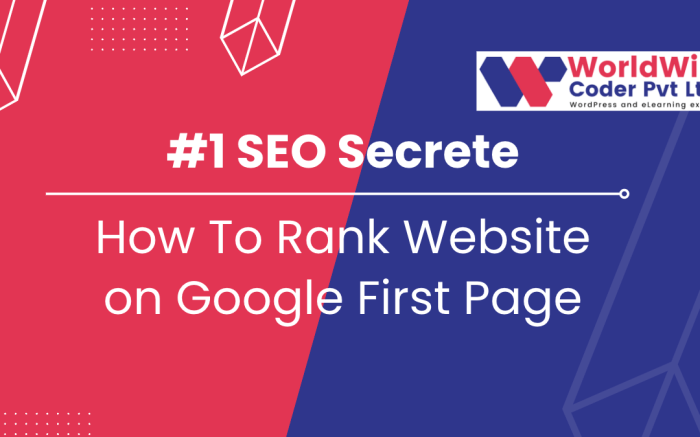
Source: worldwincoder.com
Backlinks are crucial for improving website authority and search engine rankings. They act as endorsements from other websites, signaling to Google that your site is a valuable resource. High-quality backlinks from reputable sources significantly boost your site’s credibility and visibility in search results. This section will explore strategies for acquiring these vital links.
Acquiring backlinks is not a one-time activity but a continuous effort to build a robust and diverse backlink profile. This involves actively seeking opportunities to connect with other website owners, sharing valuable content, and establishing your site as a trusted source of information. A well-managed backlink profile can significantly impact your website’s visibility and ranking.
The Role of Backlinks in Website Authority
Backlinks are essentially votes of confidence from other websites. Search engines interpret these votes as indicators of a website’s trustworthiness and relevance. A higher quantity and quality of backlinks typically correlate with higher search engine rankings. Websites with a strong backlink profile are often seen as more authoritative and credible sources of information. This perceived authority can attract more visitors, generate leads, and ultimately drive business growth.
Strategies for Acquiring High-Quality Backlinks
Building a strong backlink profile requires a strategic approach. Focus on acquiring backlinks from reputable websites in your niche. Guest blogging on relevant websites, creating high-quality content that naturally attracts links, and participating in online communities are effective strategies.
Methods for Building Relationships with Website Owners
Building relationships with website owners is essential for acquiring high-quality backlinks. Engage in meaningful conversations on social media platforms, participate in industry forums, and reach out to website owners directly. Sharing valuable content, commenting on their posts, and offering insightful perspectives can foster strong relationships and increase the likelihood of receiving backlinks.
Strategies for Monitoring and Improving Backlink Profiles, Get my website to the top of Google.
Regularly monitoring your backlink profile is essential for maintaining a healthy and effective strategy. Use tools to track the sources of your backlinks and identify any potentially harmful links. Remove or disavow any low-quality or irrelevant backlinks that may negatively impact your rankings. Continuously analyze your backlink profile to ensure that it aligns with your website’s content and target audience.
Table Summarizing Backlink Acquisition Strategies
| Strategy | Description | Effectiveness |
|---|---|---|
| Guest Blogging | Writing articles for other websites in your niche. | High. Provides valuable content and an opportunity for backlinks. |
| Content Marketing | Creating high-quality content that attracts natural backlinks. | High. Excellent for long-term link building. |
| Broken Link Building | Identifying broken links on other websites and offering your relevant content as a replacement. | Moderate. Requires careful research and a touch of outreach. |
| Directory Submissions | Listing your website on relevant online directories. | Low to Moderate. Effectiveness depends on the quality of the directory. |
| Social Media Promotion | Promoting your content on social media platforms to attract backlinks. | Moderate. Can generate valuable traffic and potential backlinks. |
Ultimate Conclusion: Get My Website To The Top Of Google
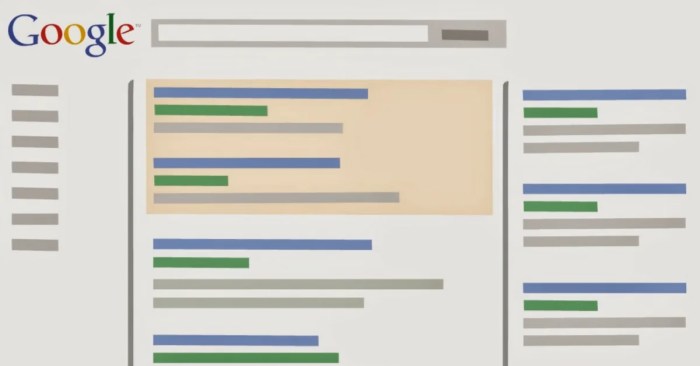
Source: skeneur.com
In conclusion, achieving top rankings on Google requires a multifaceted approach. By implementing the optimization strategies outlined in this guide, you’ll equip your website with the tools to climb the search engine results pages. Remember that consistent effort, quality content, and technical expertise are paramount in this ongoing process. Continuous monitoring and adaptation to search engine algorithms are key to maintaining a high ranking in the long run.


